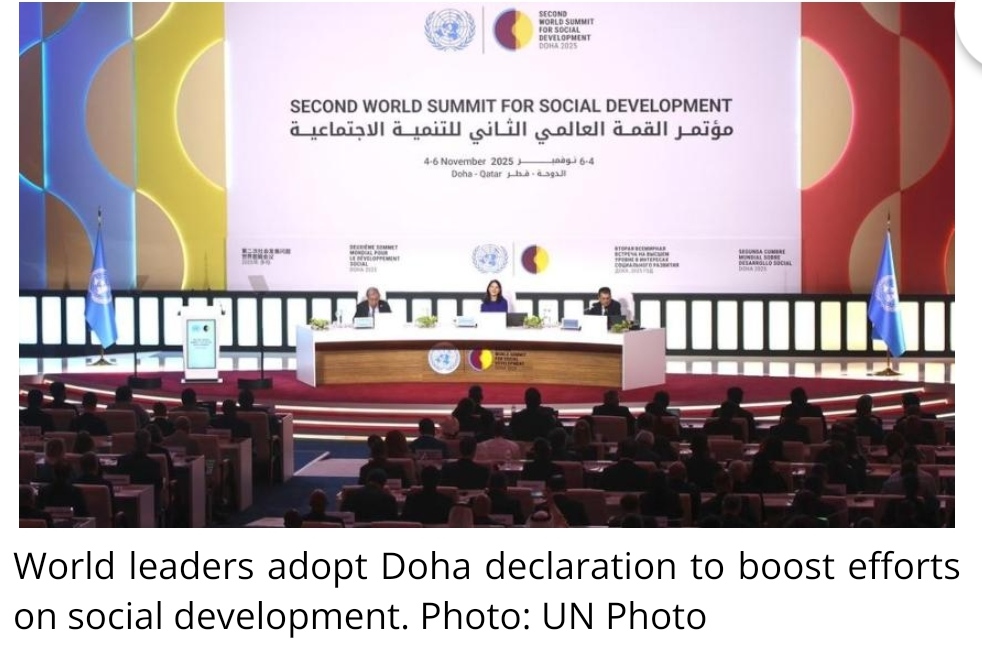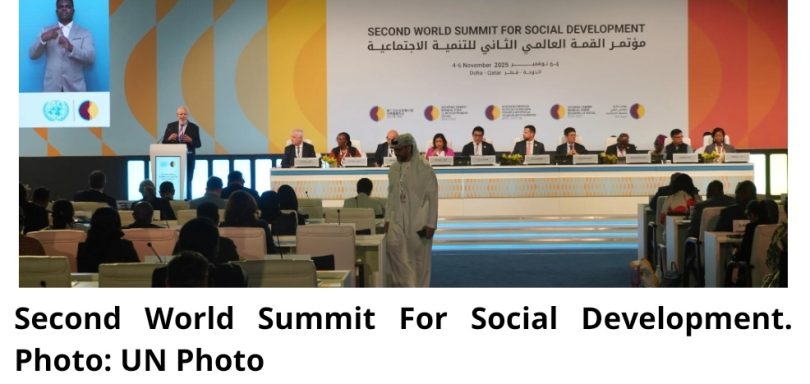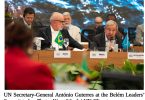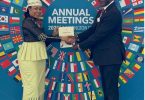Thirty years after Copenhagen first attempted to draw a global line in the sand on social development, the world returned to the conversation with sharper urgency and far less certainty.
The Second World Summit for Social Development in Doha was not simply a commemoration of a historic gathering. It was a recognition that the world has reached a more complex and unequal moment, one marked by geopolitical tension, demographic imbalances, digital disruption, and the erosion of public trust. The Doha Political Declaration, adopted at the close of the Summit, is the document intended to steady the moment. It outlines what the world claims it will do for those consistently left behind.
Yet, as with all outcome documents, the test is not the prose. The test is implemented. And here lies the central tension of the Doha commitment: strong pledges, fragile pathways.
A renewed promise in Doha
The tone for this Summit was set from the very beginning. In his welcome message, His Highness Sheikh Tamim bin Hamad Al Thani reaffirmed Qatar’s long-standing belief in human-centered development. He positioned Doha as both a venue and a partner in shaping the next chapter of global social progress. His message was clear. Social development must be reclaimed as a shared mission, supported by multilateralism, guided by solidarity, and anchored in human dignity.

This spirit carried into the negotiations themselves. Delegates acknowledged that global education, health care, and social protection systems have expanded since 1995. However, they also warned that these gains are now being reversed by inequality, conflict, and climate-related shocks. Against this backdrop, the Declaration aims to establish a new foundation for action.
The four pillars of commitment
The Doha Political Declaration is broad in scope but deliberate in its priorities. Its commitments cluster around four themes that define today’s social development landscape.
1. Poverty eradication as a structural effort
Doha reframes poverty eradication not as a charitable intervention, but as the removal of systemic barriers. Leaders commit to addressing the root causes of poverty and inequality, focusing on structural reforms, targeted investments, and more equitable access to global markets and technologies. This is a significant shift, particularly in a world where economic shocks and inflationary pressures disproportionately affect the poorest.
2. Decent work and productive employment
Delegates affirm that employment is more than income. It is dignity, stability, and empowerment. The Declaration reiterates the need to broaden access to full and productive employment, strengthen labor protections, and expand opportunities for youth who increasingly navigate informal or unstable job markets.
What remains unclear is how countries will translate this commitment into real jobs, especially in economies that are struggling with low growth or constrained fiscal space.
3. Social inclusion and universal social protection
World leaders commit to viewing social protection as an investment and not a fiscal burden. This includes more robust safety nets, gender responsive systems, support for people living with disabilities, and policy frameworks that ensure no community suffers exclusion.
The message is powerful. But the financing question is unavoidable. Expanding social protection requires sustainable, predictable resources, something many developing countries do not yet have.
4. Digital access and the challenge of misinformation
Doha directly acknowledges the new social frontier: digital transformation. The Declaration calls for action to expand digital literacy, democratize access to digital technologies, and confront the spread of misinformation, disinformation, and hate speech. It also recognizes that digital divides are no longer peripheral concerns. They are core determinants of economic competitiveness and social cohesion.
This is one of the more forward-looking sections of the Declaration, reflecting the rapid changes that have occurred since 1995. However, bridging the global digital divide requires more than just rhetorical acknowledgement. It demands investment, infrastructure, skills, and regulatory cooperation that extend far beyond the Summit venue.

The Doha Declaration also extends into areas where social development overlaps with other global priorities. These include:
- Achieving universal health coverage
- Investing in quality education at all levels, from early learning to lifelong skills
- Building resilient food systems and reducing food loss
- Addressing climate impacts that disproportionately affect the vulnerable
- Achieving gender equality and empowering women and girls
- Supporting ageing populations and countries with rapidly growing youth populations
- Reimagining metrics of progress beyond GDP
- Engaging constructively in international tax cooperation
Together, these represent a holistic understanding of what it means to build inclusive societies in a world where crises do not occur in isolation.
The implementation paradox
The credibility of the Doha Declaration rests entirely on the world’s ability to turn its promises into real outcomes. And this is where the conversation enters its difficult terrain.
1. Financing the ambition
The Declaration encourages countries to explore additional public and private financing, but makes a critical point. Private finance must not replace existing commitments. This is a recognition of a long-standing concern in development circles, where reliance on private capital often leads to unpredictable funding and unequal risk distribution.
Many countries at the Summit reiterated that meaningful social development requires a reformed international financial architecture, more concessional financing, and fairer representation for developing countries.
Without this, the commitments in Doha risk becoming aspirational rather than operational.
2. Accountability and monitoring
Leaders agreed that the commitments will undergo a five-year follow-up process, starting in 2031, which will include a high-level plenary at the UN General Assembly. This is intended to strengthen accountability. But there are open questions.
- What indicators will be used?
- How will progress be measured in areas beyond GDP?
- How will countries be held responsible for lagging behind?
- What role will civil society play in monitoring?
- And perhaps most importantly, how will the global system ensure transparency in a political context where trust in institutions is declining?
3. The integration challenge
The Declaration calls for a whole-of-government and whole-of-society approach. This is not simple. It requires governments to align ministries, streamline data systems, coordinate with non-state actors, and ensure that marginalized communities have a voice in policy design and review.
Doha provides the direction. It does not yet provide the architecture.
4. Political will
Deputy Secretary-General Amina Mohammed, in her closing remarks, summarized the mood succinctly. People expect results. They expect concrete actions, not earnest declarations. Doha has opened a door. However, walking through it requires political courage, domestic pressure, and international cooperation that often falter once the media spotlight dims.
Partnerships in motion: Qatar Charity and IOM
One of the visible examples of implementation readiness was the Memorandum of Understanding between Qatar Charity and the International Organization for Migration. The MoU focuses on humanitarian assistance, protection of migrants and internally displaced persons, emergency response, and integration of protection principles into development initiatives. This partnership reflects the Declaration’s emphasis on supporting vulnerable populations through collaborative, multi-stakeholder action.
It also serves as a reminder that meaningful progress often begins with bilateral or institutional partnerships that scale over time.
Regional bodies and the road ahead
UN regional economic commissions have already signaled their commitment to act as implementation partners. From supporting ageing policies and just energy transitions in Europe to advancing youth employment and entrepreneurship in Africa, regional bodies will play a crucial role in ensuring the Declaration moves from global words to local realities.
Their involvement is important. Social development is not achieved at plenary tables. It is achieved in classrooms, clinics, labor markets, and communities. It is a local endeavor driven by global cooperation.
A foundation, not a finish line
The Doha Political Declaration is ambitious, principled, and timely. It recognizes that the world cannot build peace, prosperity, or sustainability without addressing poverty, inequality, exclusion, and digital divides. It brings social development back to the center of global discourse. It offers a vision where human dignity is not aspirational but guaranteed.
But it also exposes the pressure points of the global system. Financing gaps. Weak accountability structures. Uncertain monitoring processes. The political complexity of domestic reforms. The widening distance between international promise and lived reality.
Doha has delivered a foundation that the world can build upon. Whether it becomes a turning point or another missed opportunity will depend on what happens long after the Summit halls fall quiet. The world has made its pledges. The real question now is whether it will confront its pitfalls with the same clarity and conviction.
If the Declaration is to matter, it must leave the page. It must translate into classrooms, clinics, jobs, protections, and digital pathways that uplift real people in real time. The next decade will reveal whether the world is ready to act on the commitments it has just proclaimed.
Written by Olivier Noudjalbaye Dedingar, USA/UN Correspondent








